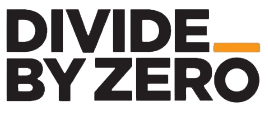The automotive industry thrives on innovation and precision. One of the critical phases in vehicle development is the design iteration process, where components are repeatedly tested and refined to achieve optimal performance and aesthetics. Rapid prototyping through 3D printing has revolutionized this phase, allowing designers and engineers to quickly produce and evaluate physical models of their designs. This blog showcases how 3D printing accelerates the automotive design process, enabling rapid prototyping and efficient iteration.
1. The Importance of Rapid Prototyping in Automotive Design
Speed and Efficiency
Traditional prototyping methods can be time-consuming and costly, often requiring weeks or even months to produce a single prototype. Rapid prototyping with 3D printing significantly reduces this time, allowing for the creation of prototypes within days or even hours. This speed enables faster design iterations, reducing the overall time to market for new vehicles.
Cost Reduction
Creating molds and tooling for traditional manufacturing methods is expensive and impractical for iterative design processes. 3D printing eliminates the need for these tools, allowing for cost-effective production of multiple prototype versions. This reduction in cost makes it feasible to explore more design options and refine components more thoroughly.
Design Flexibility
3D printing offers unparalleled design freedom, enabling the creation of complex geometries that are difficult or impossible to achieve with traditional methods. This flexibility allows designers to experiment with innovative shapes and structures, enhancing both the functionality and aesthetics of vehicle components.
2. Applications of Rapid Prototyping in Automotive Design
Functional Prototypes
Functional prototypes are used to test the performance and fit of a component within the vehicle. These prototypes are made from materials that mimic the mechanical properties of the final part, allowing for realistic testing under actual conditions. For example, engine components, suspension parts, and interior fixtures can be prototyped and tested for durability and performance.
Aesthetic Prototypes
Aesthetic prototypes focus on the visual and tactile aspects of a design. These prototypes help designers evaluate the appearance, texture, and ergonomics of interior and exterior components. By using materials and finishes that closely resemble the final product, designers can make informed decisions about the look and feel of the vehicle.
Iterative Testing and Refinement
3D printing facilitates iterative testing and refinement by allowing designers to quickly produce multiple versions of a component. This iterative process helps identify and resolve design flaws early, reducing the risk of costly errors in mass production. For example, a dashboard design can be iterated multiple times to achieve the perfect balance between aesthetics and user ergonomics.
3. Case Studies of Rapid Prototyping in the Automotive Industry
Ford Motor Company
Ford has integrated 3D printing into its design process to create functional prototypes for various components, including engine parts and brake systems. By rapidly prototyping these components, Ford can conduct real-world tests and refine designs based on performance data. This approach has significantly reduced the development time for new models .
BMW Group
BMW uses 3D printing for both functional and aesthetic prototyping. The company has developed innovative components such as lightweight brackets and custom interior elements using rapid prototyping. This process allows BMW to quickly iterate on designs, ensuring that each component meets the highest standards of performance and quality .
Divide By Zero Technologies
Divide By Zero Technologies has played a pivotal role in enabling rapid prototyping for automotive manufacturers. Their advanced 3D printing solutions provide high-speed, high-precision prototyping capabilities, allowing for the quick production of both functional and aesthetic prototypes. This accelerates the design iteration process, enabling faster innovation and improved vehicle designs.
4. The Future of Rapid Prototyping in Automotive Design
Increased Adoption
As 3D printing technology continues to advance, its adoption in the automotive industry is expected to grow. The ability to quickly produce and iterate on prototypes will become a standard practice, further enhancing the efficiency and effectiveness of the design process.
Material Innovation
The development of new materials specifically designed for 3D printing will expand the possibilities for rapid prototyping. Advances in polymers, composites, and metal 3D printing will enable the creation of even more realistic and functional prototypes.
Integration with Digital Twins
The integration of 3D printing with digital twin technology will further streamline the design iteration process. Digital twins are virtual models that replicate physical components, allowing for simulation and analysis before physical prototyping. Combining this technology with rapid prototyping will enable more precise and informed design decisions.
Conclusion
Rapid prototyping through 3D printing has transformed the automotive design process, enabling faster, more cost-effective, and flexible design iterations. By leveraging advanced 3D printing technologies from companies like Divide By Zero Technologies, automotive manufacturers can accelerate innovation and improve the quality of their vehicle components. As the technology continues to evolve, the impact of rapid prototyping on the automotive industry will only grow, driving future advancements in vehicle design and performance.

